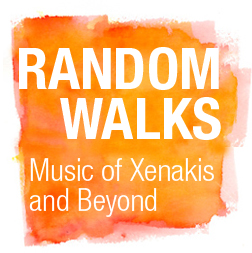Early in his compositional activity, Iannis Xenakis applied “stochastics” to music, applying probability functions adapted from engineering analysis to generative processes (1955-1962). After developing his Fundamental Phases of Music Composition he programmed a computer algorithm to generate musical score data
where most decisions were generated by stochastic processes. After producing a series of “ST” compositions, he turned his attention to deterministic processes (1963-1967). Xenakis pursued two main areas of theoretical research: sieves, and groups. The application of sieves to music provided him with the means to create ordered values to form a pitch scale or a rhythmic pattern. He used logical operations to generate the materials and to transform them (metabolae). Group theory provided a basis for organizing musical form, generating successions of defined elements by means of pre-determined relationships.
While continuing to draw upon both stochastic and deterministic processes in his music, Xenakis turned to “random walks” (based on Brownian motion) as a new means of generating melodic material or linear structures based on glissandi. As an extension of the random walk, he used transformation processes to create related linear structure, sometimes bundled into ensemble he termed “arborescences.” From the early 1970s, Xenakis drew upon all of these mathematically-derived compositional techniques throughout the rest of his career (his last works date from 1997). The only new procedure he explore later was the application of cellular automata to music (1986).
|
